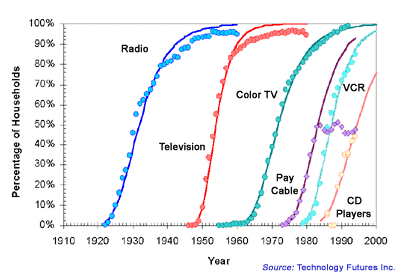Global Fixed Broadband Subscriptions Pass 1.5 Billion
- Point Topic
- Jan 27
- 4 min read
Updated: Jan 28
The global number of fixed broadband subscriptions has passed 1.5 billion, marking a significant milestone in the ongoing expansion of digital infrastructure worldwide.
“Everyone has benefitted,” says Oliver Johnson, CEO of Point Topic.
“Although as with anything too much can be a bad thing and like any tool it can be weaponised but it still marks one of the major achievements of mankind. From cave paintings via printing, literacy, libraries and even television our species has a deep down drive to communicate. The internet is in the same league and the adoption has been rapid.”

Although Point Topic has only just published quarter three 2024 numbers we are confident that the latest milestone was reached at the end of last year or possibly the first day of 2025.
In late 2010 there were five hundred million fixed lines around the world and the one billion fixed line landmark was passed in 2018, shortly before the COVID pandemic. That means it was just over 10 years for the first half a billion, 8 years for the next and only 6 years for the third five hundred million fixed line subscriptions.
“It is unlikely that the next half a billion will be covered anywhere near as rapidly. Those areas that still don’t have a fixed network are usually difficult and expensive to reach. We won’t see two billion fixed line subscriptions this decade,” says Johnson.
While growth is still rapid around the world, some markets are reaching saturation levels already.
The US reports more subscriptions than households.
Some other consumer technologies spread as quickly and in a similar fashion. This chart from TFI is a useful reference for the diffusion of consumer communications technologies through the US market. We have added a version of broadband from our data on a similar scale.
The diagram on the left comes from tfi.com/pubs/w/ti_broadband.html, for more on gompertz curves and household penetration – Global broadband subscribers – forecasts and models for top markets.
There are, as of mid 2024, more broadband lines in the US than households. Business lines and second and third lines or houses will account for the apparent oversupply. The Pew Research Centre estimates 80% of US adults (not households) subscribe to high speed internet or broadband - Americans' Use of Mobile Technology, Home Broadband | Pew Research Center. Although this is data from 2023.
China passed this milestone a while ago and other major countries are approaching it as well. Broadband is so integrated into society there that it is almost impossible to function without a connection to the internet, preferably mobile and fixed options and that is reflected in the take-up.
What’s next?
We should celebrate the latest landmark as we now have more than 1.5 billion households worldwide with a fixed line service and we should remember the remainder, up to 800 million households, that do not yet have fixed coverage.
Of course there are many who use a mobile service and that can offer the bulk of the benefits that come with a fixed connection. Typically though it is slower and more expensive and a fixed full fibre line is regarded as the best option where available.
Local, national and even global organizations like the UN are all looking to improve coverage and connectivity. As a vehicle of information and education the internet is a supremely cost-effective channel to make almost limitless horizons of information available to everyone.
“Everyone wants more eyeballs. Advertisements and their audiences subsidise much of the infrastructure in place today and that dovetails nicely with the personal and societal benefits that the internet offers. The trick is to find how to close the remaining gaps where revenue density isn’t commercially attractive, not enough eyeballs per square kilometre,” says Johnson.
There is funding available in most countries to help close the digital divide. Programmes like the Affordable Connectivity Program in the US and EU funding for Broadband are aimed at maximising the coverage of fixed and mobile broadband and supporting the adoption of it.
With higher internet and in particular broadband adoption there are plenty of positive outcomes. Better access to services and information, better education and health outcomes and even a higher tax base.
Closing the gaps and winning the race
Fixed internet is not and will not be everywhere. There will always be instances where mobile and even satellite services are the most effective solution.
“We are seeing lots of headlines at the moment around just that with Starlink and even Kuiper hitting the news recently,” says Johnson.
The battle of the oligarchs to rule space based communications is driven by governments as clients more than the relatively small number of households and even businesses that use satellite for their internet.
“The strategic value of low earth orbit communication constellations, the price you can charge and the power you wield make the investment worthwhile,” says Johnson.
With much of our world dependent on connections and often needing high speeds to function fully we are bound to see more competition across the world and even beyond.



Comments